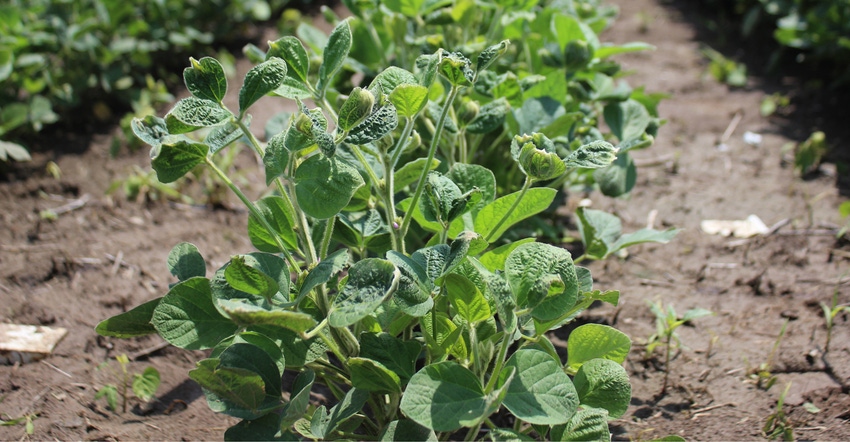
Dicamba left its mark on the 2017 growing season. Farmers and applicators should be prepared for twice as many Xtend soybean acres in 2018.
Missouri Extension specialist Kevin Bradley estimates that off-target dicamba movement impacted more than 3.6 million acres in 2017, including 600,000 acres in Illinois. So far, the Illinois Department of Agriculture has received 246 dicamba-related misuse complaints and issued 142 dicamba-related misuse warning letters. IDOA also levied one $750 fine, with 9% of the 2017 pesticide misuse complaints left to resolve. (See related story below.)
Yield results from dicamba-damaged soybeans varied greatly, says Karen Corrigan, independent agronomist and partner in McGillicuddy Corrigan Agronomics. Some farmers lost up to 30 bushels per acre, while some gained 6 bushels per acre.
“The problem with determining loss is that if it was volatility and the entire field was damaged, you have nothing to compare it to,” she explains, adding that one damaged field yielded 68 bushels per acre while neighboring fields yielded 70 to 80 bushels per acre. “Another farmer had damage over a portion of his field and he did not detect any loss.”
Crop insurance was not an option for dicamba-damaged fields, says Ted Mies, a Waverly, Ill., farmer and crop insurance representative, as herbicide injury is not a covered peril.
With crop insurance off the table, farmers and applicators turned to liability insurance. In an emailed response to Prairie Farmer, Chris Coplan, Country Financial, says, “Country Mutual Insurance Co. saw an increase in the number of inquiries about dicamba herbicide throughout the 2017 growing season,” but the company declined to answer questions about dicamba claim counts or liability payments.
Grinnell Mutual was busy with dicamba-related claims last season, says Ron Nott, claims assistant vice president. “Farm chemical-related liability payments certainly increased in 2017.”
Nationwide Insurance declined Prairie Farmer’s interview request.
Dave Brown, Insurance Providers Group, says four of his clients reported incidents after spraying dicamba and inadvertently damaging neighboring fields. In addition, his clients reported 13 field incidents where spray from others damaged soybean stands. Investigations included diagrams and time-stamped photos, followed by a wait-and-see period until harvest. Only one liability claim was paid to Brown's clients; remaining potential claims were dismissed after yield comparisons revealed no loss from dicamba damage.
Mies dealt with his own cupped soybeans in 2017. “I wasn’t too concerned, but you never know until the combine rolls,” he says. “But I didn’t see any difference.” His local retailer received 80 damaged-soybean claims, but none resulted in yield loss or liability payment.
Corrigan says dicamba damage can’t be measured by cupped leaves or yield monitors alone. Yield is not the only way to have loss, she adds, as many farmers talked about weed control challenges. “The canopies didn’t close and many became infested with weeds,” Corrigan explains. “That cost will be paid over the next few seasons in increased herbicide program costs.”
There are other kinds of loss that can’t be measured or covered by insurance. “Just the pain and suffering of looking at damaged fields and wondering what would be took a toll on many growers,” she says. “Even without yield loss, farmers should not be OK with damaging someone else's crop.”
Pesticide misuse complaints
As of mid-April, the Illinois Department of Agriculture has resolved 91% of the 430 pesticide misuse complaints from 2017. Here’s a look at the investigation results:
• 430 total pesticide misuse complaints
• 390 (91%) total cases resolved as of early April 2018
• 362 ag-related pesticide misuse complaints, of which 246 were dicamba-related
• 151 cases out of 430 total complaints found to have no misuse, of which 64 cases were dicamba-related
• 239 cases out of 430 total complaints classified as misuse
• 218 warning letters issued, including 142 dicamba-related
• 21 fines issued: two $1,000 fines; six $750 fines, including one dicamba-related; 11 $500 fines; two $250 fines
About the Author(s)
You May Also Like




